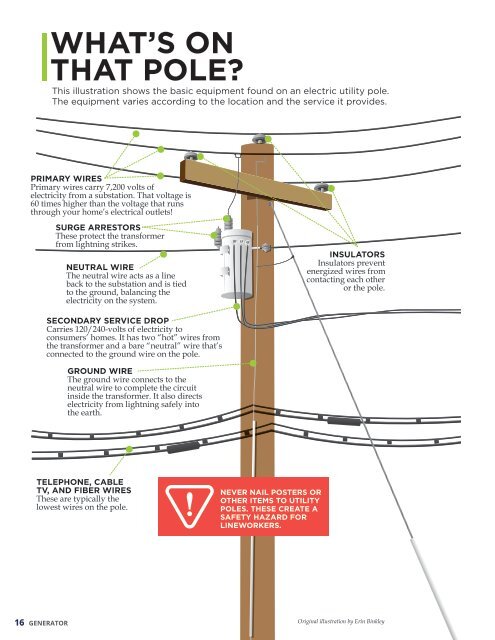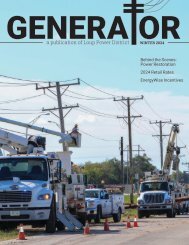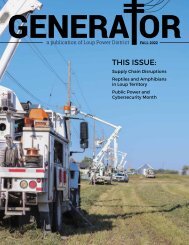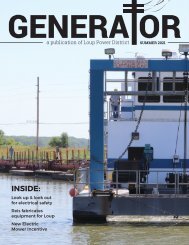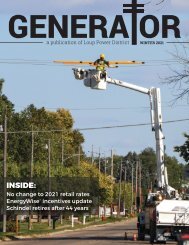Spring 2020 Generator
A look inside Loup Power District's new Columbus Service Center.
A look inside Loup Power District's new Columbus Service Center.
You also want an ePaper? Increase the reach of your titles
YUMPU automatically turns print PDFs into web optimized ePapers that Google loves.
WHAT’S ON<br />
THAT POLE?<br />
This illustration shows the basic equipment found on an electric utility pole.<br />
The equipment varies according to the location and the service it provides.<br />
PRIMARY WIRES<br />
Primary wires carry 7,200 volts of<br />
electricity from a substation. That voltage is<br />
60 times higher than the voltage that runs<br />
through your home’s electrical outlets!<br />
SURGE ARRESTORS<br />
These protect the transformer<br />
from lightning strikes.<br />
NEUTRAL WIRE<br />
The neutral wire acts as a line<br />
back to the substation and is tied<br />
to the ground, balancing the<br />
electricity on the system.<br />
INSULATORS<br />
Insulators prevent<br />
energized wires from<br />
contacting each other<br />
or the pole.<br />
SECONDARY SERVICE DROP<br />
Carries 120/240-volts of electricity to<br />
consumers’ homes. It has two “hot” wires from<br />
the transformer and a bare “neutral” wire that’s<br />
connected to the ground wire on the pole.<br />
GROUND WIRE<br />
The ground wire connects to the<br />
neutral wire to complete the circuit<br />
inside the transformer. It also directs<br />
electricity from lightning safely into<br />
the earth.<br />
TELEPHONE, CABLE<br />
TV, AND FIBER WIRES<br />
These are typically the<br />
lowest wires on the pole.<br />
NEVER NAIL POSTERS OR<br />
OTHER ITEMS TO UTILITY<br />
POLES. THESE CREATE A<br />
SAFETY HAZARD FOR<br />
LINEWORKERS.<br />
16 GENERATOR<br />
Original illustration by Erin Binkley


